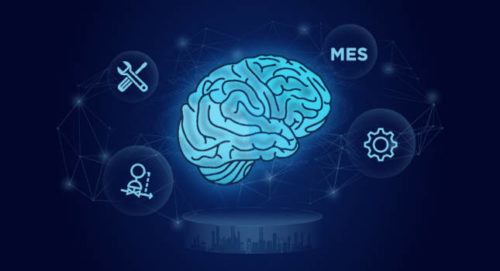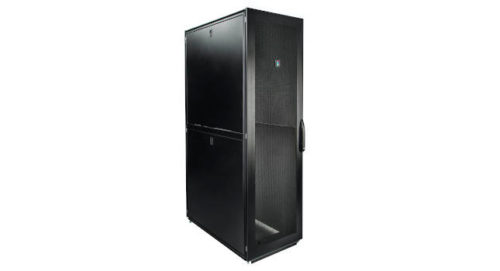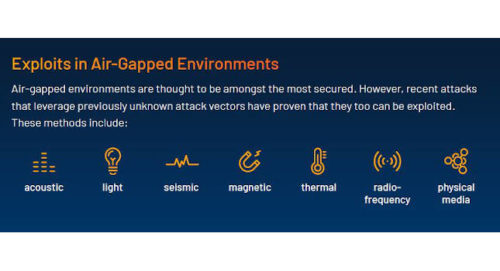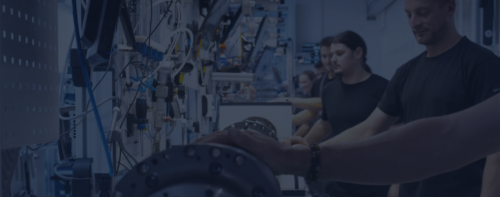Manufacturing IT, MES
Manufacturing IT: Manufacturing is the production of goods usually in a factory or facility; IT stands for information technology and refers to devices, networks, software, electronics and systems used at higher levels in the organization than plant-floor production operations; Manufacturing IT uses those higher level technologies at the operations level. Manufacturing execution systems consist of software applications that track and document the transformation of raw materials to finished goods.
Manufacturing IT, MES Articles
Justifying manufacturing IT investments using the RAVE approach
Engineering and IT Insight: Justify investing in and applying new technology by explaining four main benefits: R is for revolutionary benefit, A for avoidance, V for visionary, and E for enhancement (RAVE). Listing all expected benefits will help determine if the change is worth the cost.
Justifying changes can be difficult, especially for projects using information technology in manufacturing. Many of the benefits from applying IT solutions to manufacturing operations are indirect and hard to accurately estimate or measure. One way to justify applying new technology is to use the RAVE approach. There are four main reasons for changing: R for a revolutionary benefit, A for an avoidance benefit, V for a visionary benefit, and E for an enhancement benefit. The following explanations appear in order of commonality.
1. Avoidance benefits
One of the most common reasons for implementing IT in manufacturing is avoidance of costs or defects. Avoidance occurs when there are activities that you currently do, that you do not want to do, and new technology can let you avoid them. Examples of avoidance benefits could be reduced paperwork and sign-offs as a result of an electronic instruction system and elimination of manual inspections through the installation of an automated vision inspection system. Other avoidance benefits could be eliminating reconfiguration and validation of multiple independent systems when equipment is changed by installing an advanced controller and eliminating the configuration of basic control and advanced control in different system using different tools. New systems with improved sensing capabilities and control algorithms may also reduce defects, avoiding rework costs and reducing scrapping costs.
Avoidance benefits are often the easiest to estimate, easiest to quickly measure, and the easiest to justify. However, when using avoidance as the reason for a project, it is important to actually measure the costs before and after the implementation. Many IT projects have been justified using avoidance, but when the true cost of implementation and potential increased support is added, the avoidance benefits disappear. Many executives complain that if all of the cost avoidance projects were implemented, then production would be free, so you have to have real numbers available to justify a change based on avoidance benefits.
2. Enhancement benefits
Enhancement benefits come when a changed system delivers the ability to do things you currently do, that you want to continue to do, and to do them more efficiently or effectively. Examples of enhancement benefits are better human-machine interface (HMI) displays that enhance visibility into the process, the ability to increase throughput using an updated control system, and improved historian report access through new servers and faster disks. Enhancement projects that increase safety or reduce unexpected shutdowns can provide measurable benefits, but other enhancement projects can be hard to justify because the value gained can be difficult to measure. What is the value of enhanced visibility into the process that prevents a shutdown or accident? That is a value that is difficult to prove or measure, so enhancement projects are often relegated to the bottom of the project list.
3. Visionary benefits
Visionary benefits come from changes that give you the ability to do something you currently do not do, know that you could do, and that you want to do. Examples of visionary benefits are device failure predictions with a modern fieldbus network, automated procedure control using a batch or MES system, automated labeling of all products with new printing and engraving systems, and handheld displays that allow operational staff instant access to all production information regardless of location. Visionary changes often occur when you look at other companies in your industry and other industries, and see them doing things with IT that you don’t do today. They had a vision to use IT and have proven that implementations can bring benefits. Benefits from visionary changes can often be estimated using benchmarks and comparisons to other companies. Visionary benefits are usually easier to justify than enhancements, because you can reference advantages that your competitors have using new technologies.
4. Revolutionary change
A final reason for making a change can be the extraordinary benefits derived from a revolutionary change. A revolutionary change occurs when there are activities you currently don’t do, you want to do, and you were not even aware were possible with new technologies.
For example, revolutionary changes could be self-learning systems that learn how to respond to upsets and failures, virtual reality systems using robots to monitor hazardous areas, heads-up displays in safety goggles that overlay maintenance information, operator instructions, and equipment status on whatever device an operator is looking at, or 3D printing integrated into your production lines for personalized products.
Revolutionary change requires you to expand thinking beyond just incremental improvements and take a hard look at the entire production chain. The production chain is all of the activities that are performed to produce a product, including all primary and secondary activities, testing activities, quality assurance activities, packaging activities, inventory movement activities, and maintenance activities. Revolutionary changes occur when entire links in your production chain can be removed. They are the hardest changes to justify because they break with tradition and may force changes on groups not willing to change. However, revolutionary changes can also have the greatest benefit.
When considering a new manufacturing IT project, look for the benefits to occur in more than one area. Consider the replacement of an obsolete DCS system with a modern one. This project may bring benefits by avoidance of shutdowns due to aging hardware, enhancements for operational staff, visionary changes by procedure automation and smart devices, and revolutionary changes in the ability to run high-speed and on-line global optimization processes. Another example is replacement of a server farm with a small set of virtualized servers. This project may bring avoidance benefits by reducing upgrade costs, enhancement benefits by better server management, and visionary benefits by allowing online updates and upgrades.
Remember the RAVE acronym when calculating benefits: revolutionary benefits, avoidance benefits, visionary benefits, and enhancement benefits. Listing all of the expected benefits will help determine if the change is worth the cost.
– Dennis Brandl is president of BR&L Consulting in Cary, N.C., www.brlconsulting.com. His firm focuses on manufacturing IT. Edited by Mark T. Hoske, content manager, CFE Media, Control Engineering and Plant Engineering, mhoske@cfemedia.com.
ONLINE extra
This posted version contains more information than the print / digital edition issue of Control Engineering.
At www.controleng.com, search Brandl for more on related topics.
Manufacturing IT, MES FAQ
-
How is information technology used in manufacturing?
Information technology (IT) is used in manufacturing to improve connectivity, efficiency, quality and safety of production processes. This can be achieved by implementing systems such as:
- Computer-aided design (CAD) and computer-aided manufacturing (CAM) to streamline design and manufacturing processes.
- Enterprise resource planning (ERP) software to manage production planning and control.
- Manufacturing execution systems (MES) to track and control production processes.
- Shop-floor control systems to monitor and optimize machine performance.
- Quality management systems to ensure product quality and traceability.
- Internet of things (IoT) devices and sensors to collect real-time data and provide insight into production processes.
These technologies allow for greater connectivity, visibility and control over production processes, enabling manufacturers to make better decisions and improve efficiency.
-
What challenges arise when using information technology in a manufacturing setting?
- Integration with existing systems: Ensuring that new technology integrates with existing systems, and data exchange can be a challenge.
- Cybersecurity: Protecting sensitive information and critical systems from cyber attacks is a growing concern.
- User adoption: Ensuring users are trained and able to effectively use new technologies can be a challenge.
- Data quality: Maintaining accurate and consistent data can be a challenge in a manufacturing setting.
- Cost: Implementing and maintaining new technology can be expensive.
- Technical support: Having sufficient technical support and resources to address problems can be a challenge.
- Maintenance and upgrades: Keeping technology up-to-date and functional can require ongoing maintenance and upgrades.
-
How can information technology advance Industry 4.0?
Information technology (IT) has a crucial role in advancing Industry 4.0 by providing the connectivity, automation and data management capabilities that enable the industrial internet of things (IIoT). IT can help to integrate and optimize production processes, improve collaboration and communication among stakeholders and support real-time decision-making with data-driven insights. Some specific ways IT can advance Industry 4.0 include:
- Connecting physical assets and processes to the digital world through sensors, networks and cloud computing.
- Analyzing and using large amounts of data generated by IoT devices to improve process efficiency and quality.
- Developing and implementing advanced algorithms and machine learning models to automate processes and improve decision-making.
- Enhancing collaboration and communication among stakeholders through advanced tools, such as digital twins, augmented reality and mobile technologies.
-
What challenges face information technology in manufacturing?
- Integration with legacy systems: Integrating new technology with older, existing systems can be challenging and require significant investment.
- Cybersecurity: Protecting sensitive data and systems from cyber threats is a growing concern in the manufacturing industry.
- Data management: Collecting, storing and analyzing vast amounts of data generated by Industry 4.0 technologies can be challenging and require significant investments in data management infrastructure.
- Skill gaps: The implementation of new technology often requires a workforce with specialized skills, and the shortage of skilled professionals can be a significant challenge.
- Cost: Implementing new technology and infrastructure can be expensive, and many organizations may struggle to justify the investment.
- Resistance to change: Some employees may resist the adoption of new technology, particularly if they are unfamiliar with it or feel that it will negatively impact their job security.
- Regulation compliance: Manufacturing industries may face strict regulations regarding data privacy, intellectual property and product safety, requiring organizations to carefully manage and secure their technology systems.
Some FAQ content was compiled with the assistance of ChatGPT. Due to the limitations of AI tools, all content was edited and reviewed by our content team.









